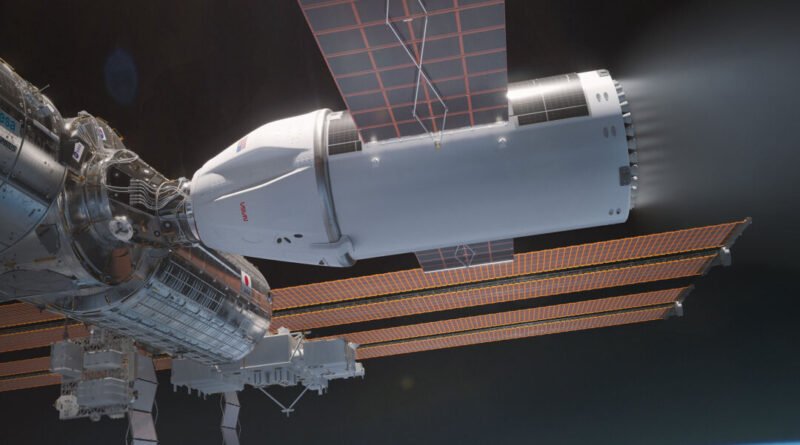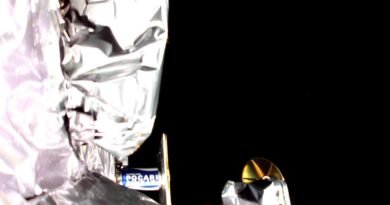NASA and SpaceX Reveal New Spaceship for International Space Station Detachment from Orbit
The vehicle will have six times more fuel and four times more power than the current SpaceX Dragon spacecraft.
The International Space Station (ISS) is coming down.
NASA and SpaceX leaders announced their plan on July 17 to retire the ISS safely while maintaining an uninterrupted human presence in low Earth orbit.
Using the $843 million contract it won in June, SpaceX will create a one-off variant of the Dragon Cargo spacecraft that will direct the ISS into a controlled re-entry over a still-undecided area of ocean by 2030.
Sarah Walker, SpaceX’s director of Dragon mission management, said the vehicle will have an enlarged service module or “trunk” that will hold six times more propellant—more than 35,000 pounds—and four times more power than the current Dragon spacecraft.
Dana Weigel, manager of NASA’s International Space Station Program, said that the deorbiting vehicle will be launched “about one to one-and-a-half years before final reentry.”
Once docked, the ISS will “drift down” to 220 km (136 miles) above the Earth’s surface over the following year.
Once in position, the vehicle will fire its 30 Draco engines for a series of burns setting up for a final re-entry burn four days later.
The deorbiting vehicle will be tasked with firing its engines to keep the station on course and powering it when comes into contact with thickening layers of the upper atmosphere during its descent.
NASA plans to fully utilize the station with a human crew for as long as possible, aiming to maintain occupation for up to six months before re-entry.
Three private companies are currently developing their own free-flying space stations.
One of which, Axiom, plans to connect its first modules to the ISS in its early development.
NASA is aiming to overlap operations on the ISS and private space stations before re-entry, ensuring its ongoing streak of human presence in space continues.
More than $1 billion is wanted for the monumental project, and NASA officials told reporters that each space agency connected to the ISS—including JAXA, the ESA, and the Russian space agency Roscosmos—would contribute based on their percentage of the station’s overall mass.
All ISS partners have already been briefed and agree with the overall plan.
Elon Musk’s private spacefaring company will only be designing the orbit-bound vehicle while NASA will be responsible for the launch vehicle.
Ms. Weigel said that a “dwell in storage” requirement was added to the contract, demanding SpaceX deliver the spacecraft in a timely manner, allowing NASA to have it on hand, even if they have to delay the flight.
By modifying actively flying spaceships, SpaceX is incorporating hardware that is already NASA-certified and flight-proven.
However, despite the familiarity, Ms. Weigel said that the typical time to develop a new spacecraft is between five and eight years, which is why they saw a need to begin this project.
She said it usually takes three years to procure the rocket capable of launching the deorbiting vehicle into orbit.
The International Space Station is nearly 30 years old and has been continually occupied since November 2000.
It has been visited by 280 people from more than 20 countries, including more than 160 from the United States.
Former astronaut and space station crew member Ken Bowersox, current associate administrator of NASA’s Space Operations Mission Directorate, said he was “excited” to talk about the deorbit vehicle.
“It’s about the future,” he said. “It’s about what we’re gonna do out in the next decade. And it’s about preparing for that future, preparing for what we’re going to do with ISS.
“And so we can take our mind off what we do at the end of ISS and concentrate on getting as much as we possibly can out of it.”
But he and Ms. Weigel also said this launch into the future probably won’t preserve much of the past.
“There’s some little things up on ISS that I think we’ll probably want to bring home on the last cargo dragon that comes down,” Mr. Bowersox said, mentioning log books, mission patches, and some panels.
“I can’t see us affording any dedicated missions right now.”
Mr. Bowersox didn’t rule out the possibility of a salvage mission to the crash site or missions and funded requests from partner nations and museums such as The Smithsonian to secure would-be artifacts of a bygone era of space travel, but nothing is planned.






